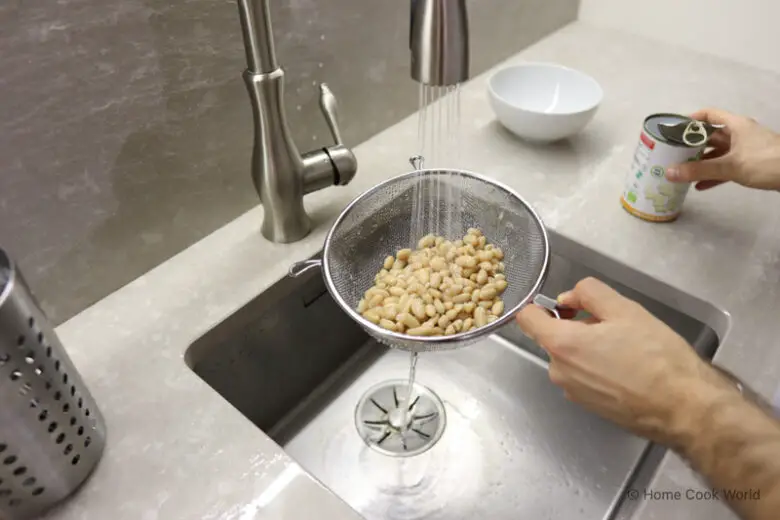Get the beans out with the water or drain them and worry less? It comes down to your personal preferences—and your dietary requirements.
As you prepare for the next big pot of chili, you are faced with an important decision: should you drain the beans from the can, or should you add them to the pot with the water?
The decision becomes even more difficult when you consider that some recipes are very specific about this, others only indicate that you have a choice, and third ones don’t even mention it.
So? Should you? Here’s our honest take on the topic.
Whether to drain canned beans or use the liquid comes down to personal preference. Some people use the liquid because they say it makes the chili thicker and tastier. Others prefer to drain it to remove the excess salt and starch.
According to a study by researchers at the University of Tennessee, draining canned beans removes 36% of the added salt. If you also rinse the beans, 41% of the salt is removed.
If you need to mind your sodium intake for one reason or another, then draining and rinsing the beans before adding them to the chili is a must.
If sodium intake is not a concern, simply add the beans to the pot along with the bean water. Add a little less salt or bouillon cube than you’d usually do and give the chili a taste. Bland chili can always be made saltier; oversalted chili is unsalvageable.
What do I do, you asked?
It depends on how much I spent on the can and what I plan to use it for. For salads, I buy cheaper cans, draining and rinsing the beans after opening. For chili’s, I buy more expensive cans with no preservatives and little added salt, and then use the bean water.
Canned beans are essentially beans that have been blanched, sealed in cans with water, salt, and often additives or preservatives, then sterilized and cooked at high heat under steam pressure, the Canned Food Alliance explains on its website.
Beans canned in their own liquid usually contain water, salt, and calcium chloride. The latter is a firming agent that prevents the beans from becoming mushy through the cooking process.
When beans boil, they release some of the starch on their surface to the water, making it denser. This thick, starchy bean water can be an excellent thickener and an easy solution for watery chilis.
Some of the pigments that give beans their color also seep into the water. That’s the reason why, when you boil black beans, you get black water, red beans yield red water, and white or lima beans—cloudy water.
The bean water, particularly if you use black, red kidney and/or pinto beans, can give your chili (and your soups, stews, and braises) a really nice color, so use it up accordingly instead of pouring it down the drain.
Beans canned with tomato sauce contain at a minimum tomato sauce, salt, and sugar. It’s not uncommon for manufacturers of canned beans to add mustard, garlic powder, and dried onions for extra flavor, as well as vinegar for tang.
We don’t like beans in tomato sauce, especially for home-cooked chili, because the sauce is too sweet, which can easily overpower everything else and ruin an otherwise well-developed recipe.
(Besides, you can always mix a can of peeled plum tomatoes with a can of white beans. Not only will you get a better result, but you will also have full control over the aroma and flavor.)
How to Drain and Rinse Canned Beans

When you start cooking, you quickly learn that there’s a trick to everything: even basic tasks like draining canned beans.
To drain a can of beans, open the can and pour the contents into a strainer large enough to hold over a bowl or in the sink to avoid making a mess. Then rinse the beans by holding them under lukewarm running water for 20-30 seconds, and you’re basically done.
To drain a can of beans without a strainer, over a bowl or in your kitchen sink, hold the edge of a tablespoon against the open can and tilt the can just enough to drain the bean water. Avoid contact with the sharp edges of the lid to avoid cutting yourself.
Since you don’t have a strainer handy, the best way to rinse the beans is to fill the can with tap water, let them sit in it for 2 to 3 minutes, and then drain them using the technique described above.
In Conclusion
To drain canned beans or not, then?
If you don’t mind a little extra salt and want to thicken the chili, add the beans to the pot along with the salty, starchy water.
However, if you need to watch your sodium intake, drain and rinse the beans. This will remove up to 41% of the excess salt, and in larger pots, that can add up to quite a bit.

